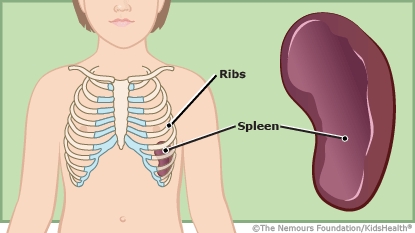- Home
- Parents Home
- Allergy Center
- Asthma Center
- Cancer Center
- Diabetes Center
- A to Z Dictionary
- Emotions & Behavior
- First Aid & Safety
- Food Allergy Center
- General Health
- Growth & Development
- Flu Center
- Heart Health
- Homework Help Center
- Infections
- Diseases & Conditions
- Nutrition & Fitness Center
- Play & Learn Center
- School & Family Life
- Pregnancy Center
- Newborn Center
- Q&A
- Recipes
- Sports Medicine Center
- Doctors & Hospitals
- Videos
- Para Padres
- Home
- Kids Home
- Asthma Center
- Cancer Center
- Movies & More
- Diabetes Center
- Getting Help
- Feelings
- Puberty & Growing Up
- Health Problems of Grown-Ups
- Health Problems
- Homework Center
- How the Body Works
- Illnesses & Injuries
- Nutrition & Fitness Center
- Recipes & Cooking
- Staying Healthy
- Stay Safe Center
- Relax & Unwind Center
- Q&A
- Heart Center
- Videos
- Staying Safe
- Kids' Medical Dictionary
- Para Niños
- Home
- Teens Home
- Asthma Center
- Be Your Best Self Center
- Cancer Center
- Diabetes Center
- Diseases & Conditions
- Drugs & Alcohol
- Expert Answers (Q&A)
- Flu Center
- Homework Help Center
- Infections
- Managing Your Medical Care
- Managing Your Weight
- Nutrition & Fitness Center
- Recipes
- Safety & First Aid
- School & Work
- Sexual Health
- Sports Center
- Stress & Coping Center
- Videos
- Your Body
- Your Mind
- Para Adolescentes
Spleen and Lymphatic System
What Are the Spleen and Lymphatic System?
The spleen is located in the upper left part of the belly under the ribcage. It helps protect the body by clearing worn-out red blood cells and other foreign bodies (such as germs) from the bloodstream.
The spleen is part of the lymphatic system, which is an extensive drainage network. The lymphatic (lim-FAT-ik) system works to keep body fluid levels in balance and to defend the body against infections. It is made up of a network of lymphatic vessels that carry — a clear, watery fluid that contains proteins, salts, and other substances — throughout the body.
What Does the Spleen Do?
The spleen acts as a filter. It weeds out old and damaged cells and helps control the amount of blood and blood cells that circulate in the body.

The spleen also helps get rid of germs. It contains white blood cells called and macrophages. These cells work to attack and destroy germs and remove them from the blood that passes through the spleen.
The body also uses the spleen as a place to store blood and iron for future use.
What Does the Lymphatic System Do?
One of the lymphatic system's major jobs is to collect extra lymph fluid from body tissues and return it to the blood. This is important because water, proteins, and other substances are always leaking out of tiny blood capillaries into the surrounding body tissues. If the lymphatic system didn't drain the excess fluid, the lymph fluid would build up in the body's tissues, making them swell.
The lymphatic system is a network of very small tubes (or vessels) that drain lymph fluid from all over the body. The major parts of the lymph tissue are located in the:
- bone marrow
- spleen
- thymus gland
- tonsils
The heart, lungs, intestines, liver, and skin also contain lymphatic tissue.
The major lymphatic vessels are:
- the thoracic duct: It begins near the lower part of the spine and collects lymph from the pelvis, abdomen, and lower chest. The thoracic duct runs up through the chest and empties into the blood through a large vein near the left side of the neck.
- the right lymphatic duct: It collects lymph from the right side of the neck, chest, and arm, and empties into a large vein near the right side of the neck.
The lymphatic system also helps defend the body against germs (viruses, bacteria, and fungi) that can cause illnesses. Those germs are filtered out in the lymph nodes, small clumps of tissue along the network of lymph vessels. Inside the lymph nodes, lymphocytes called T-cells and B-cells help the body fight infection. B cells make antibodies — special proteins that stop infections from spreading by trapping disease-causing germs and destroying them.
Most of our lymph nodes are in clusters in the neck, armpit, and groin area. They're also found along the lymphatic pathways in the chest, abdomen, and pelvis, where they filter the blood.
When a person has an infection, germs collect in the lymph nodes. If the throat is infected, for example, the lymph nodes in the neck may swell. That's why doctors check for swollen lymph nodes (sometimes called swollen "glands") in the neck when someone has a sore throat. This is called lymphadenopathy.

© 1995- The Nemours Foundation. KidsHealth® is a registered trademark of The Nemours Foundation. All rights reserved.
Images sourced by The Nemours Foundation and Getty Images.